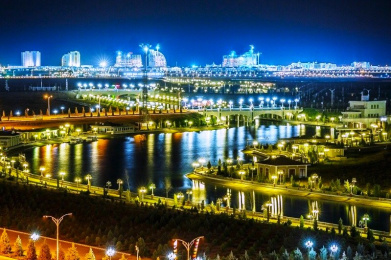SunRise: Innovative solar panel facade recognized as world record by Guinness
13.07.2025 | 13:30 |In Calgary, Canada, a groundbreaking project has been completed, seamlessly integrating art and renewable energy. The 3000 m² facade of the SunRise residential building is entirely covered with artistically designed solar panels. This innovative installation has been recognized as the world's largest solar mural integrated into architecture, showcasing an unprecedented fusion of aesthetics and functionality.
At the core of the project is Building-Integrated Photovoltaics (BIPV) technology, where solar modules are not merely affixed to the facade but are directly integrated into its structure. The photovoltaic cells are concealed behind a decorative layer designed by a local artist. This pattern is digitally printed onto a specialized translucent coating that permits the crystalline silicon elements to function unimpeded while ensuring an aesthetically pleasing appearance. Each panel's foundation consists of a durable, lightweight, and heat-resistant aluminum sandwich panel with a honeycomb core. A highly transparent glass layer with an anti-reflective coating is positioned on top, maximizing sunlight transmission to the photovoltaic cells. To prevent overheating and condensation, a drainage system and an air gap are incorporated on the reverse side, and the facade is also equipped with ventilation featuring continuous thermal and moisture insulation.

The system generates a peak power of 267 kW, sufficient to power the building's lighting, elevators, ventilation, and other common area needs. Each panel is connected to an inverter that converts direct current to alternating current, and any surplus energy can be utilized within the building or transmitted to the city grid. It is estimated that replacing traditional cladding with the solar facade offers a payback period of approximately four years. The SunRise project yields a dual benefit: a significant reduction in electricity costs and a decrease in carbon dioxide emissions by nearly 150 tons annually. The panels demonstrate an efficiency of approximately 18%, which is considered an excellent performance for BIPV solutions.
The building, constructed in the 1970s, had long been in a state of disrepair. Instead of demolition, a decision was made to reimagine it. Initially, panels were planned only for the south side, but the requirements of a federal program led to a more extensive solution. Designers meticulously tested color schemes to preserve aesthetics without compromising performance, as even subtle shades can impact metrics. Consequently, the SunRise facade has not only transformed into an electricity-generating surface but has also become a prominent cultural landmark. This project serves as an inspiring example of how existing structures can be re-purposed as sources of clean energy, simultaneously enhancing the urban landscape and rendering it more technologically advanced and appealing.
ORIENT











